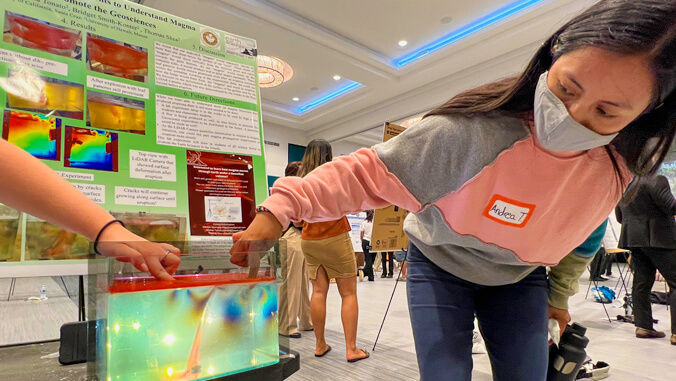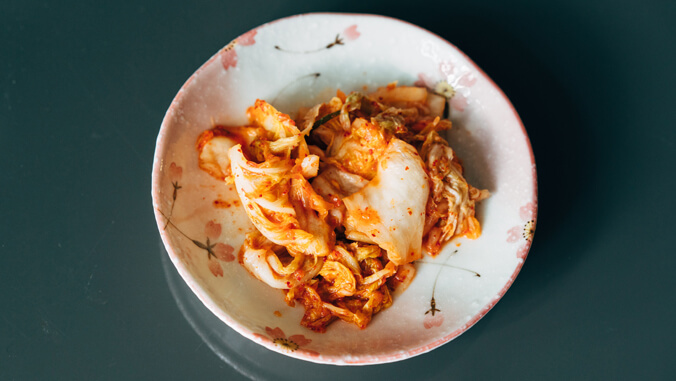
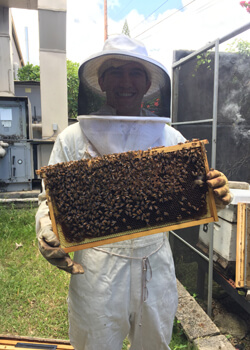
Exploring the health benefits of the tasty side dish kimchi and discovering the intellectual abilities of honeybees were just two of the more than 70 projects showcased at the 2022 Summer Undergraduate Research Experience (SURE) Symposium on July 29. Hosted annually by the Undergraduate Research Opportunities Program (UROP), the nine-week University of Hawaiʻi at Mānoa summer research and creative work experience culminated with student presentations in a hybrid format, including in-person poster presentations for the first time since 2019 and hybrid oral presentations for the first time ever.
The event was held at UH Mānoa’s Campus Center Ballroom and Kuykendall Hall, and virtually through Zoom for guests who were unable to attend in-person. Students in the ballroom presented via a poster session style, while others delivered oral presentations in-person at Kuykendall Hall or virtually via Zoom.
“It is fantastic to see, once again this summer, such a diverse group of students and projects represented in the SURE Program and Symposium,” said Creighton Litton, UROP director and College of Tropical Agriculture and Human Resources (CTAHR) professor. “I want to congratulate all of our undergraduate student scholars for committing to these experiences and successfully making it across the finish line. I would also like to thank all of the faculty mentors and UROP staff who made it possible for these students to engage in this high impact practice over the summer.”
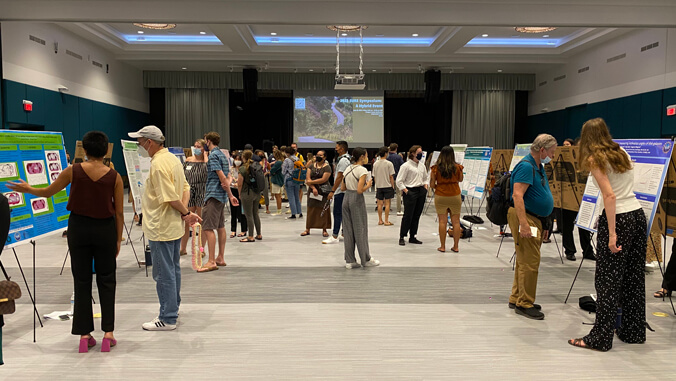
Improving health with kimchi
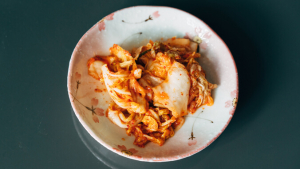
Nikki Zamani is on track to graduate this summer with her bachelor’s degree in biology and a minor in public health. Zamani’s project analyzed the mineral contents of kimchi, which follows research on fermented foods by her mentor, CTAHR Professor Pratibha Nerurkar. Zamani, who grew up on Maui, has always enjoyed eating the tasty dish and found even more reason to love it, as kimchi has also been shown to have incredible health benefits.
“Kimchi consumption has been demonstrated to improve gut health, strengthen the immune system, support heart health, and even has anti-cancer, anti-aging, and anti-diabetic properties,” Zamani said. “Despite extensive research of kimchi’s health enhancing effects, there are minimal studies regarding the mineral contents of kimchi. Our goal was to evaluate the influence of spices on the kimchi dish as a whole.”
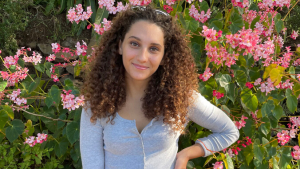
The spice mix consisted of green onions, red pepper powder, ginger and fresh garlic. Both the spice mix and kimchi were fermented in glass jars for 72 hours. Zamani discovered that the finished kimchi dish had significantly more potassium, sodium and zinc compared to the fermented spice mix. Also, higher sodium levels in kimchi were observed compared to the spice mix due to the brining process of napa cabbage during kimchi preparation.
Zamani hopes her research will encourage members of the community, particularly Native Hawaiians and Pacific Islanders who have higher rates of obesity and diabetes, to incorporate kimchi into their diets to improve their health.
“Future studies in our lab will focus on the lactic acid bacteria in kimchi versus the spice mix during fermentation,” Zamani said. “More research on kimchi can benefit our local populations to promote the consumption of this culturally-relevant food.”
Related UH News stories:
- $3.3M for game-changing type-2 diabetes study in Hawaiʻi’s NHPI communities, August 10, 2021
- Native Hawaiian and Pacific Islander communities hardest hit by COVID-19, May 1, 2020
Honeybees demonstrate intellect
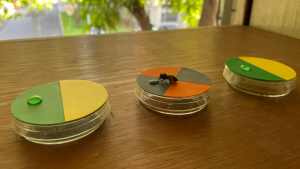
Honeybees are major crop pollinators, and produce honey, beeswax and more. However, did you know they possess problem solving abilities that compare with mammals and primates? Under the mentorship of Associate Professor Patricia Couvillon from the Department of Psychology and Pacific Biosciences Research Center, Joseph Caldwell’s project put honeybees to the test to see if they are able to solve complex abstract problems.
Caldwell’s first challenge was to see if the honeybees could distinguish between two different patterns. Each pattern had two colors, a combination of blue, yellow, green or orange. One pattern had the two colors side by side and the other pattern had the colors alternating in a pie design. The bees learned to choose only one category of pattern, which was rewarded with sugar water.
For the next challenge, the bees were presented with three patterns, two identical and one different. They were only rewarded for choosing the different or odd pattern. A majority of bees completed the task successfully, which Caldwell said demonstrates their ability to form an abstract concept called “oddity.”
“Until recently, it was thought that only mammals and non-human primates could solve complex abstract problems such as an oddity task. Even 4 and 5-year-old children cannot solve an oddity problem,” Caldwell said. “It is a marvel that honeybees, with a relatively simple brain, can learn this type of problem!”
Caldwell hopes to expand his research into other types of relational learning in honeybees, such as big vs. small, symmetry vs. asymmetry, tall vs. short, etc. Caldwell is a senior biology major in the School of Life Sciences. He has earned a bachelor’s degree in psychology from UH Hilo.
UROP funding support
Zamani’s and Caldwell’s projects both received UROP project funding. Each year, UROP awards approximately $500,000 in funding to support faculty-mentored undergraduate student projects and presentations.
—By Marc Arakaki
